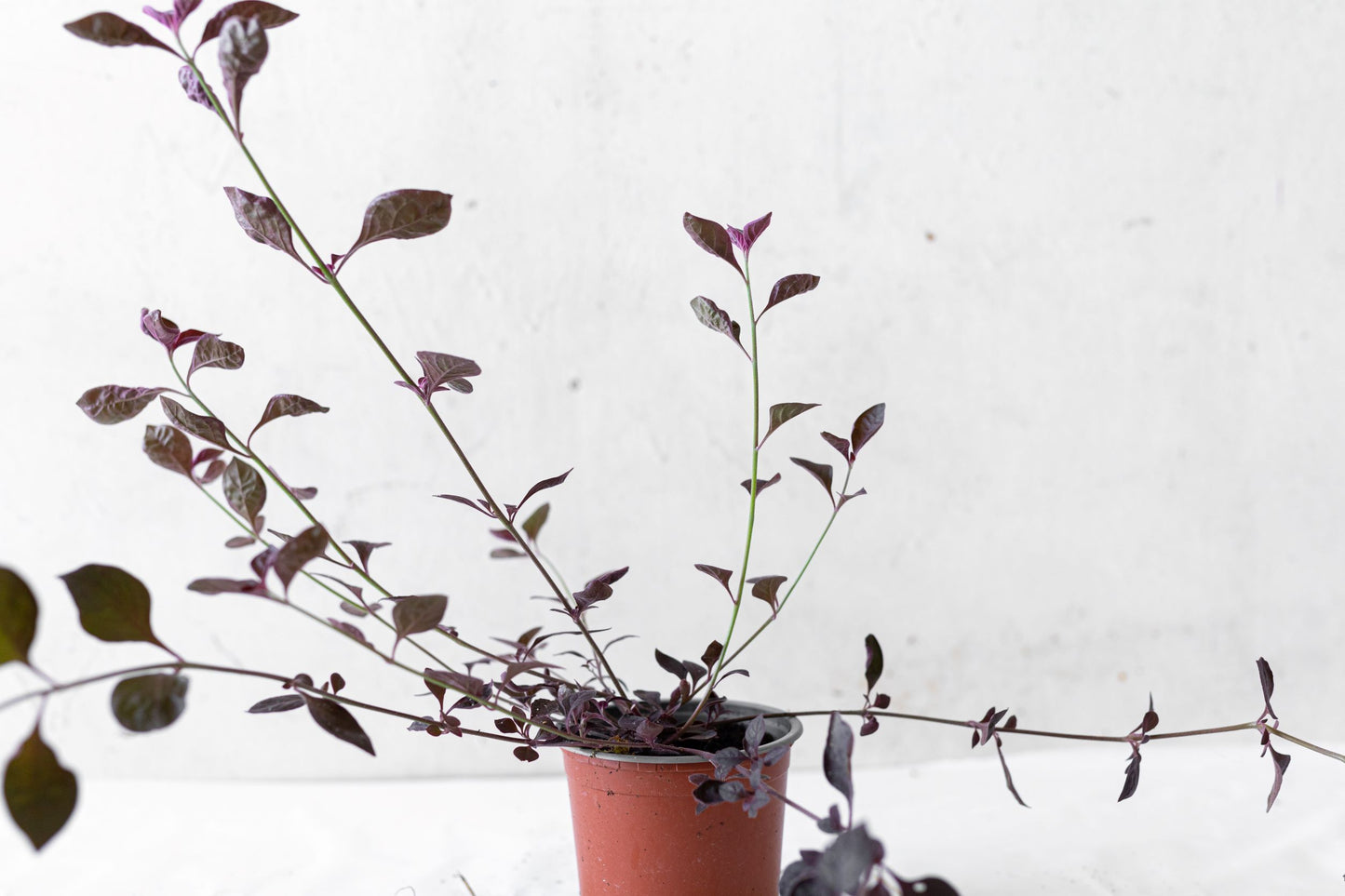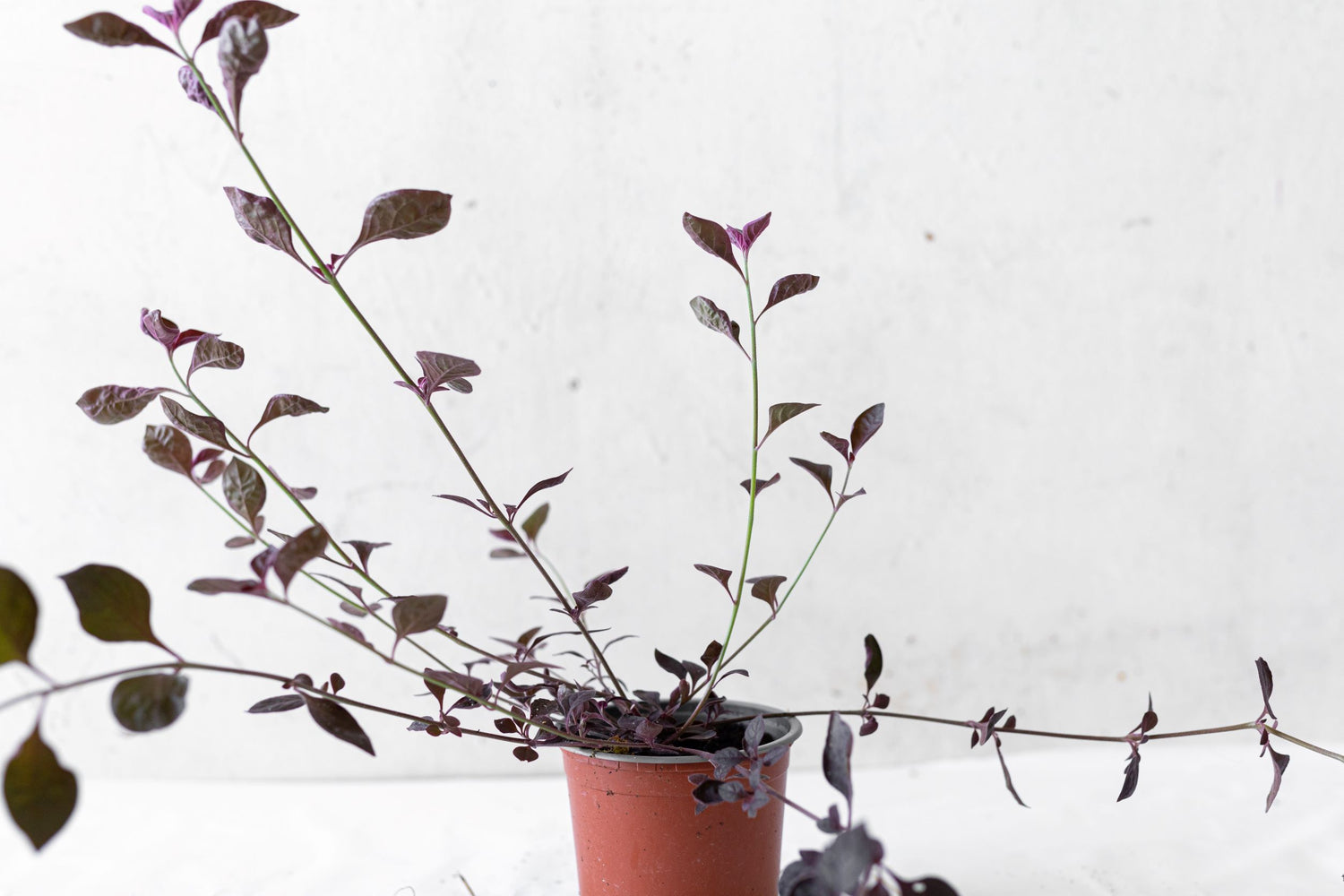cybloom
Alternathera
Regular price
€5,00 EUR
Regular price
Sale price
€5,00 EUR
Unit price
per
Tax included.
Couldn't load pickup availability
Family: Amaranthaceae
Origin: South and Central America
The Size: 6-12 in. tall, 1- 1 1/2 ft. wide
Temperature & Humidity: Since joy weed is native to warm, humid climates, it cannot survive freezing temperatures. Therefore, in zones 10 to 11, they can be kept outside year-round as a perennial. However, these plants are annuals in most other USDA zones. Joy weed is native to humid areas. This makes keeping a regular watering schedule very important. In addition, adding a layer of mulch to your outside plants will help maintain the needed moisture in the soil.
Lightning: These plants come from hot, sunny climates, so they thrive in a lot of light. Joy weed is known for its bright foliage colours, but these eye-catching hues only shine in full sun. These plants can tolerate partial shade, but they may lose some of their colourings and take on a leggy or lanky look.
The Soil: Joyweed loves rich, fertile soil. Not only does this give the plant the nutrients it needs to stay healthy, but it also allows crucial drainage. Before adding joyweed to your garden, be sure to amend the soil with plenty of organic matter or compost.
Watering: Joyweed needs a lot of water to stay happy. Give it at least an inch per week. Soggy soil can kill joy weed, and drought can too. Keep soil moisture consistent to help you to avoid any problems. Let the first inch of the soil dry out before watering to prevent overwatering. If you forget to water, you may notice that your joy weed is quick to wilt, but don’t panic. These plants spring back quickly with a good drink.
Fertilizer: If planted in rich soil, joy weed does not require much fertilizer. Too much fertilizer can burn and kill the plant. However, in poor soil, your joy weed would do well with liquid fertilizer, such as fish emulsion during summer.
Reproduction: Propagating your joy weed is easy and can be done by cuttings or division. If you do not want to reduce the size of your original plant, propagating with cuttings is the way to go. The cutting can be placed in water until roots form, and then it can be transferred to moist soil.
Transfer: Joyweed grows wonderfully in containers. They make beautiful, vibrant hanging baskets that can be kept inside. When choosing a pot, be sure to find one with drainage holes. Soggy soil can quickly kill your plant, so good drainage is a must.
Features of Care: Caring for joyweed is a breeze, and they are easy to propagate from. This plant is a low-maintenance species, as long as it’s growing in well-draining soil in full sunlight in a hotter climate. It is pretty pest-resistant too.
Difficulties: Joyweed grows well in a pot, thus keeping this plant in a container is a great option for those living in areas with harsh winters. Move it inside as the temperatures drop as this plant will not survive cold winters outdoors.




